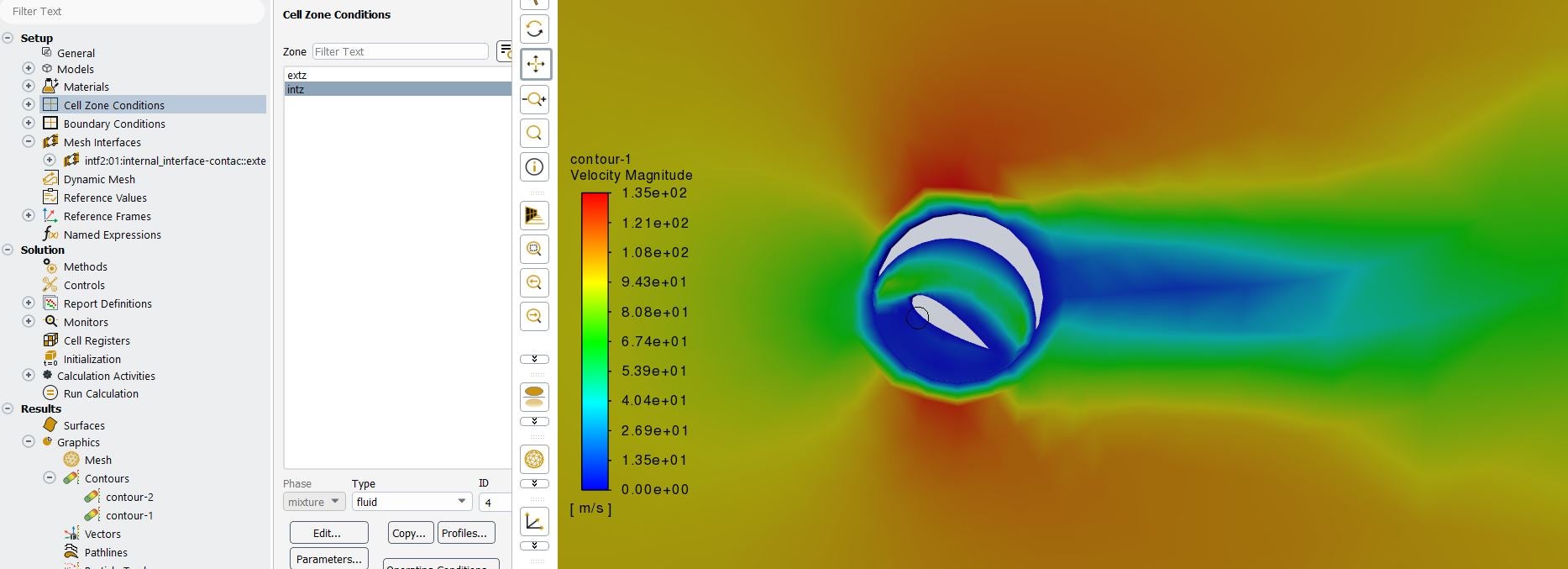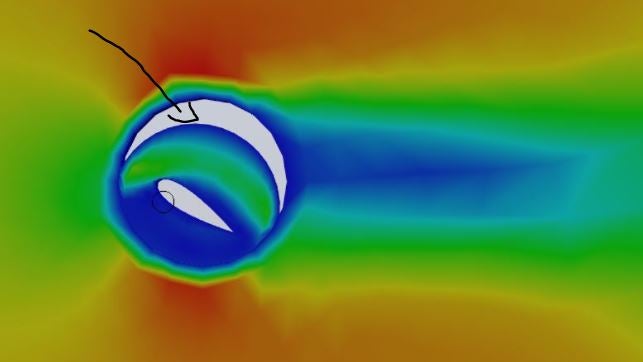TAGGED: fluent, rotating-airfoil, simulation, sliding-mesh, zone-penetration
-
-
August 24, 2021 at 7:04 pm
babakmonfared
SubscriberHi guys
I am simulating a 3D rotating airfoil. I have created two separate zones 1- stationary zone (external zone) 2- rotating zone (internal zone). then an unstructured mesh was defined. but the problem is that, after simulation, the two zones penetrate each other. is there anybody here, who can help me?
thanks
August 25, 2021 at 12:49 pmKarthik Remella
AdministratorHello What do you mean by: "the two zones penetrate each other"? Can you clarify?
Karthik
August 26, 2021 at 4:55 pmbabakmonfared
SubscriberHello
Dear Kremella
According to figure, the rotating zone has penetrate the stationary zone and it has caused an empty surface created ( white surface near the airfoil).
August 26, 2021 at 4:57 pmSeptember 2, 2021 at 2:24 pmalfnarso
SubscriberDid you create the mesh using Fluent Meshing or Ansys Meshing? Did you try to preview the mesh motion to confirm that the nodes at the stationary interface do not move along with the nodes at the moving interface?
September 2, 2021 at 4:00 pmRob
Forum ModeratorWhat is the centre of rotation of the fluid volume? What is set in the cell zone panel?
Also check the boundary conditions at the top & bottom of the domain as the contour suggests you missed something.
Viewing 5 reply threads- The topic ‘3D rotating airfoil simulation by using sliding mesh’ is closed to new replies.
Ansys Innovation SpaceTrending discussionsTop Contributors-
3572
-
1188
-
1076
-
1063
-
952
Top Rated Tags© 2025 Copyright ANSYS, Inc. All rights reserved.
Ansys does not support the usage of unauthorized Ansys software. Please visit www.ansys.com to obtain an official distribution.
-
The Ansys Learning Forum is a public forum. You are prohibited from providing (i) information that is confidential to You, your employer, or any third party, (ii) Personal Data or individually identifiable health information, (iii) any information that is U.S. Government Classified, Controlled Unclassified Information, International Traffic in Arms Regulators (ITAR) or Export Administration Regulators (EAR) controlled or otherwise have been determined by the United States Government or by a foreign government to require protection against unauthorized disclosure for reasons of national security, or (iv) topics or information restricted by the People's Republic of China data protection and privacy laws.













